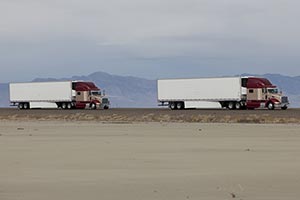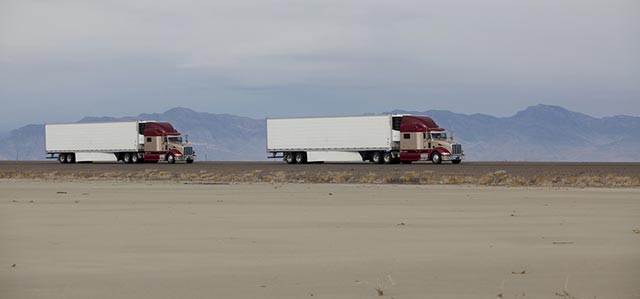Managing Editor, Features and Multimedia
Path to Platooning Requires Regulatory Framework, Public Acceptance, Execs Say

 Peloton Technology
Peloton TechnologyNASHVILLE, Tenn. — Executives from Volvo Trucks and Peloton discussed the industry’s pathway to automated driving and platooning technologies at the Technology & Maintenance Council’s annual meeting here.
The biggest hurdles for these systems include establishing a regulatory and legislative framework and garnering public acceptance, said Susan Alt, senior vice president of public affairs at Volvo Trucks.
“This is one area where the technology is in front of society. The technology is there. . . . It’s getting people used to it,” Alt said at a Feb. 29 task force meeting held by TMC’s Future Truck Committee.
Greater fuel efficiency, lower emissions and reduced traffic congestion are among the potential benefits of platooning and automation, but “the safety benefits could outweigh all of those things,” she said.
Volvo Group is an investor in Peloton, which has developed a truck platooning system that electronically links a pair of trucks through vehicle-to-vehicle communications and radar-equipped active braking systems.
Peloton said its technology reduces aerodynamic drag and saves fuel for both trucks and also prevents collisions through active braking. The company’s system will undergo a fleet trial later this year in Texas.
However, platooning technology has been tested for years elsewhere in the world, particularly in Europe, said Steve Boyd, co-founder and vice president of external affairs at Peloton.
“There’s a global race under way to deploy advanced freight solutions, and we want to keep on pace with that,” he said.
Boyd said Peloton’s system can boost fuel efficiency by 10% for the rear truck and 4.5% for the lead truck at a 40-foot following distance. That can generate a payback period of less than a year, he said.
Trucks often travel in groups today, which means that many fleets could be able to arrange platoons without significant changes to dispatching, Boyd added.
Regarding the regulatory landscape, Boyd said there currently are no federal limits to platooning.
“In fact, there’s a lot of support,” he said, citing two major projects backed by the U.S. Department of Transportation — one led by Auburn University and the other by Caltrans.

